Mastering Pest Control: Essential Techniques and Strategies for All Environments
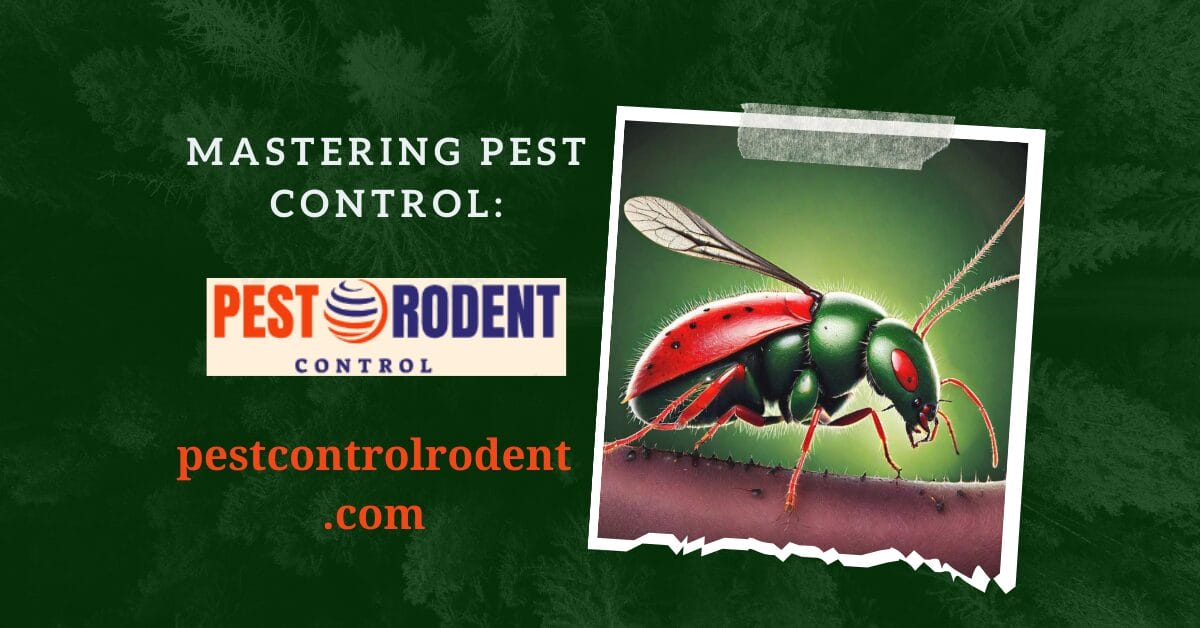
Mastering Pest Control: Essential Techniques and Strategies for All Environments
Pest control is a vital aspect of maintaining health and safety in various environments, from homes and businesses to agricultural fields. Pests can pose significant risks, including health hazards, structural damage, and economic losses. Implementing effective pest control methods is crucial to manage infestations and prevent future problems. This comprehensive guide explores the best practices and strategies for pest control, integrating the latest industry standards and scientific research.
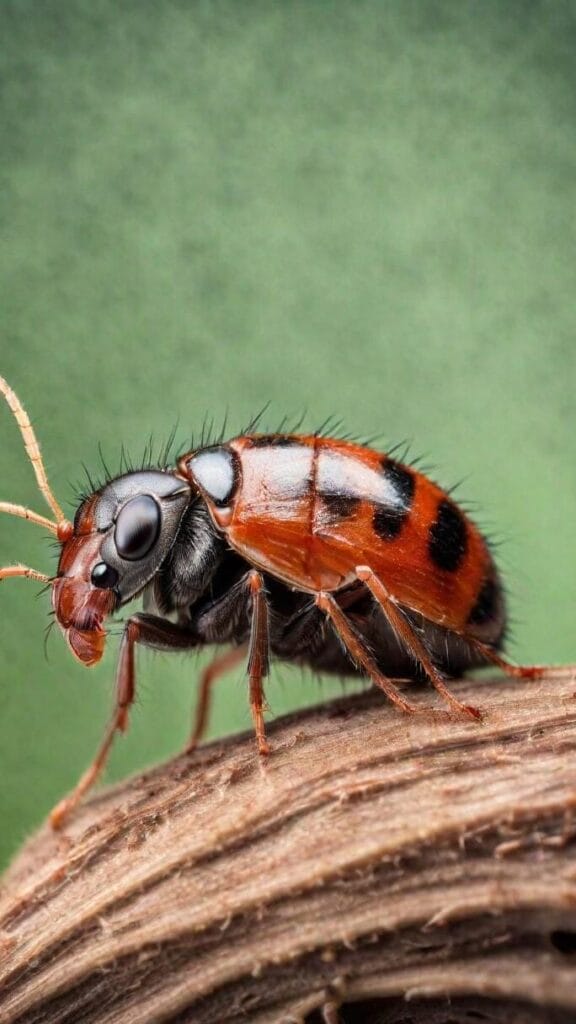
Understanding Pest Behavior
To implement effective pest control measures, it is essential to understand the behavior, lifecycle, and factors that contribute to pest infestations. Different pests such as rodents, insects, and arachnids exhibit specific patterns that can be strategically targeted. Proper identification of the pest species is the first critical step. Misidentification can lead to ineffective treatments and worsen the problem. Additionally, understanding the lifecycle of pests allows targeting them at their most vulnerable stages, such as when they are eggs or larvae. Knowing their habitat preferences is also crucial. For example, rodents prefer dark, secluded areas, while termites thrive in moisture-rich environments. This knowledge enables more precise interventions, reducing the likelihood of infestations. By grasping these behavioral nuances, pest control efforts can be more efficient and tailored, leading to better long-term outcomes.
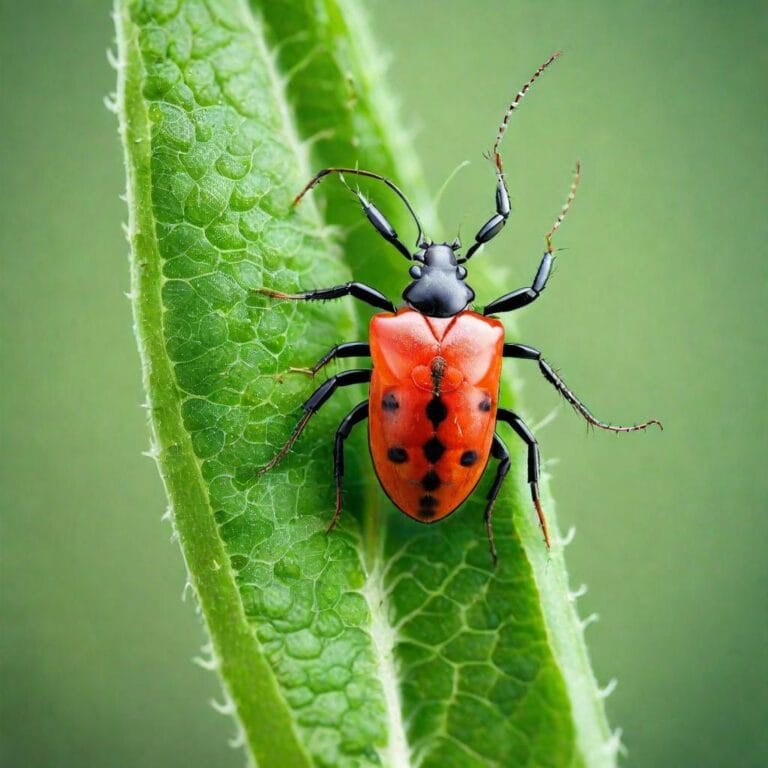
Integrated Pest Management (IPM)
Integrated Pest Management (IPM) is a sustainable approach that combines various methods and practices to minimize the use of harmful chemicals and reduce environmental impact. IPM emphasizes a holistic strategy that incorporates cultural, biological, mechanical, and chemical controls. Cultural control involves modifying the environment to make it less conducive to pests, such as maintaining cleanliness and proper waste management. Biological control uses natural predators and parasites to manage pest populations, offering an eco-friendly alternative to chemicals. Mechanical and physical controls involve barriers, traps, and other devices to reduce pest access and populations. Chemical control, considered a last resort, employs targeted and low-toxicity pesticides to minimize harm. By integrating these diverse methods, IPM provides a balanced approach that not only addresses current infestations but also prevents future occurrences. This strategy ensures long-term pest control while prioritizing environmental health and safety.
Cultural Control
Cultural control involves altering the environment to make it less hospitable to pests. This method is foundational in pest management, as it addresses the root causes of infestations. Key practices include maintaining high standards of sanitation to reduce attractants such as food debris, which can lure pests like ants and cockroaches. Habitat modification is also crucial, involving actions such as removing standing water to deter mosquitoes and ensuring proper waste management to prevent rodent infestations. In agricultural settings, crop rotation and diversification can disrupt pest life cycles, making it harder for them to establish and multiply. These cultural practices are preventative, aiming to create environments that are inherently less attractive or accessible to pests. By focusing on these modifications, pest populations can be controlled naturally, reducing the need for chemical interventions and promoting long-term sustainability.
Biological Control
Biological control employs natural predators, parasites, and pathogens to manage pest populations. This eco-friendly method leverages the natural relationships between species to keep pest numbers in check. For instance, introducing predatory insects such as ladybugs and lacewings can effectively control aphids and other plant pests. Parasitic wasps can target and kill specific pests like caterpillars and beetles, while microbial agents such as beneficial bacteria, fungi, and viruses can infect and eliminate pests. These biological agents are particularly valuable in agricultural settings, where they can reduce the reliance on chemical pesticides, which can harm beneficial insects and lead to resistance. The use of biological control methods requires careful planning and monitoring to ensure that introduced species do not become invasive or disrupt local ecosystems. When implemented correctly, biological control provides a sustainable, long-term solution to pest management, enhancing biodiversity and ecological balance.
Mechanical and Physical Control
Mechanical and physical control methods are fundamental components of Integrated Pest Management (IPM), providing immediate and tangible means of reducing pest populations. These methods include the use of traps, barriers, and environmental modifications. Traps, such as rodent traps, sticky traps for insects, and pheromone traps, are effective tools for monitoring and directly reducing pest numbers. Physical barriers, including screens, door sweeps, and caulking, prevent pests from entering buildings, providing a first line of defense. Heat treatment is another valuable method, particularly for pests like bed bugs, which are highly sensitive to temperature changes. This involves raising the temperature in infested areas to levels that are lethal to pests but safe for humans and pets. These mechanical and physical strategies are crucial because they can be implemented with minimal environmental impact and without the use of chemicals, making them a key part of sustainable pest management practices.
Chemical Control
Chemical control is an integral part of pest management, but it should be used judiciously and as a last resort. When other methods such as cultural, biological, and mechanical controls are insufficient, chemical interventions can provide the necessary control. The selection of pesticides should focus on those that are target-specific to minimize collateral damage to non-target species, including beneficial insects, pets, and humans. Low-toxicity options are preferable to reduce health risks and environmental impact. Proper application is critical; it is essential to follow label instructions meticulously and use the correct dosage to avoid the development of pesticide resistance among pest populations. Integrated Pest Management (IPM) principles advocate for combining chemical controls with other methods to ensure a comprehensive approach. This balanced strategy helps manage pest populations effectively while promoting long-term sustainability and environmental stewardship.
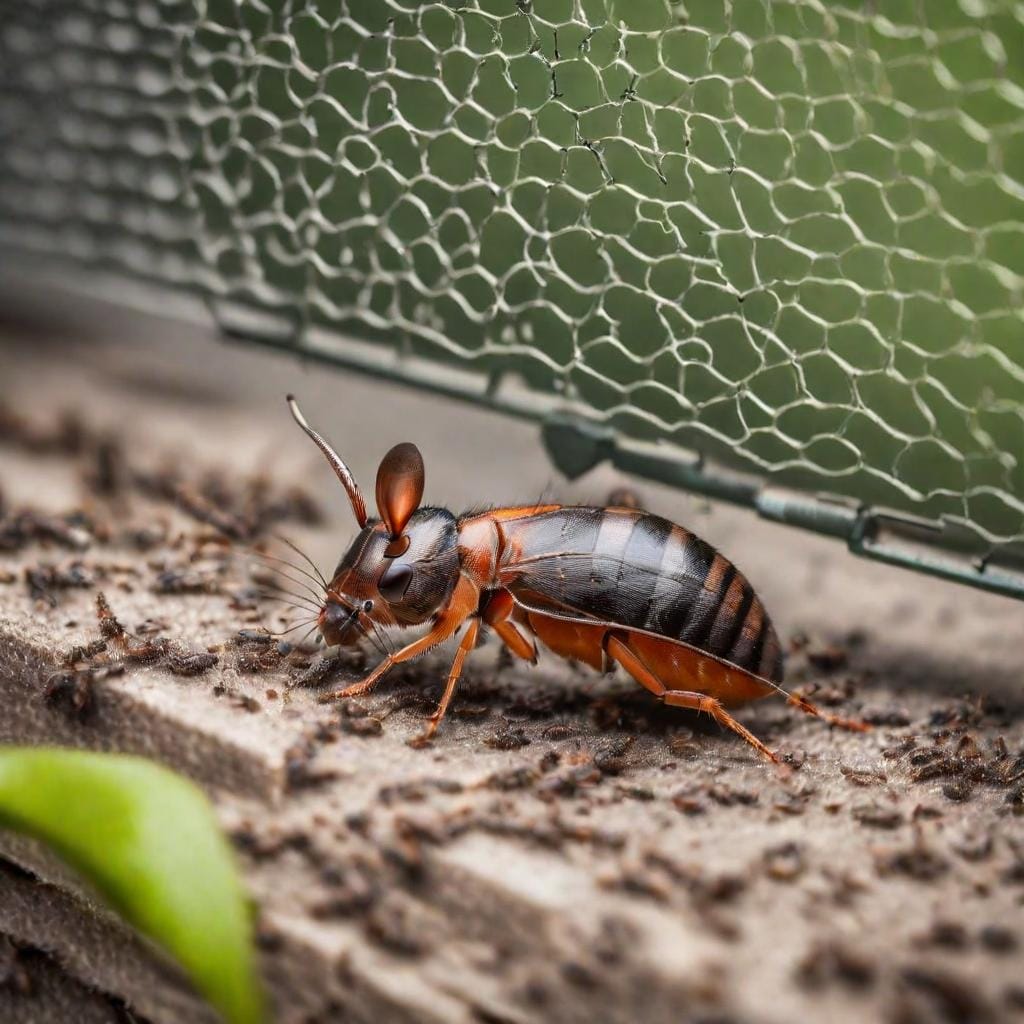
Best Practices for Residential Pest Control
Residential pest control requires a proactive approach to prevent infestations and maintain a pest-free environment. By implementing a combination of preventive measures and targeted treatments, homeowners can effectively manage and reduce pest populations. Regular inspections are crucial for early detection of potential pest entry points and signs of infestations. This includes looking for droppings, damage, and nests in common areas such as kitchens, pantries, basements, and attics. Proper food storage is another key practice, involving the use of airtight containers to prevent access by pests such as ants, rodents, and pantry beetles. Effective waste management practices, including the use of sealed bins and regular disposal, help deter pests from being attracted to household waste. Maintaining a well-kept yard by trimming vegetation, removing debris, and ensuring proper drainage can significantly reduce the risk of pest infestations. Pest-proofing measures, such as sealing cracks and gaps, installing screens, and adding door sweeps, prevent pests from entering the home. By combining these practices, homeowners can create an environment that is less attractive and accessible to pests, ensuring a healthier and safer living space.
Regular Inspections
Conducting regular inspections of your home is a fundamental practice in maintaining a pest-free environment. These inspections should be thorough and systematic, covering all areas where pests are likely to gain entry or establish nests. Focus on identifying potential entry points such as cracks, gaps, and crevices around windows, doors, and utility penetrations. Check for signs of infestations, including droppings, gnaw marks, and nests, particularly in kitchens, pantries, basements, and attics. Rodent droppings, for example, are commonly found in areas where food is stored, while chewed wires and damaged insulation can indicate the presence of rodents. Regular inspections enable early detection of pest problems, allowing for prompt intervention before infestations become severe. By incorporating regular inspections into your routine maintenance, you can proactively address potential issues and implement preventive measures to protect your home from pests.
Proper Food Storage
Proper food storage is a critical practice in residential pest control, as it prevents pests from accessing food sources and thriving in your home. Store food in airtight containers to keep it fresh and inaccessible to pests such as ants, rodents, and pantry beetles. These containers should be made of durable materials like glass or plastic with tight-fitting lids. Additionally, regularly clean pantry shelves and dispose of expired or infested food items to prevent contamination. Ensure that pet food is also stored securely and not left out overnight. In the refrigerator, keep food covered and sealed to avoid attracting pests. Proper food storage extends to handling leftovers; promptly refrigerate or freeze uneaten portions to prevent spoilage and pest attraction. By maintaining these practices, you reduce the likelihood of pests being drawn to your home, thereby supporting overall pest management efforts and promoting a hygienic living environment.
Waste Management
Effective waste management is essential in residential pest control, as improperly handled waste can attract a variety of pests, including rodents, insects, and scavenging wildlife. Start by using garbage bins with tight-fitting lids to prevent pests from accessing food scraps and organic waste. Regularly dispose of household waste to avoid accumulation, which can become a breeding ground for pests. Composting is an eco-friendly practice, but it should be managed carefully; use enclosed compost bins and avoid adding meat, dairy, or oily food scraps that attract pests. Yard waste, such as leaves and grass clippings, should also be managed properly to prevent creating habitats for pests. Additionally, ensure that recycling bins are kept clean and that containers are rinsed before disposal to minimize attractants. By adhering to these waste management practices, you can significantly reduce the risk of pest infestations and maintain a cleaner, healthier living environment.
Yard Maintenance
Maintaining your yard is a crucial aspect of residential pest control, as a well-kept yard can significantly reduce the risk of pest infestations. Regularly trimming vegetation, such as shrubs and trees, prevents pests from using them as bridges to enter your home. Keep the grass mowed and remove any leaf litter, fallen branches, or debris where pests like rodents and insects can hide. Proper water management is also vital; ensure that your yard has adequate drainage to avoid standing water, which can attract mosquitoes and other pests. If you have outdoor lighting, use yellow or sodium vapor lights, which are less attractive to insects compared to traditional white lights. Mulch should be applied sparingly and kept away from the foundation of your home to deter pests like termites and ants. By
maintaining your yard diligently, you create an environment that is less hospitable to pests, thereby supporting overall pest management efforts.
Pest-Proofing
Pest-proofing your home involves taking proactive measures to prevent pests from entering and establishing themselves. This process starts with sealing cracks and gaps around windows, doors, and utility penetrations using caulk or weatherstripping. Installing or repairing screens on windows and vents can prevent insects from gaining access while allowing for ventilation. Door sweeps are effective in closing gaps under exterior doors, blocking entry points for rodents and insects. Additionally, inspect and seal any openings around pipes, cables, and other utility penetrations. Consider installing chimney caps and mesh coverings for vents and exhaust fans to keep out larger pests such as birds and bats. Regularly check and maintain these barriers to ensure their effectiveness. By implementing these pest-proofing measures, you create a strong defense against potential infestations, maintaining a safer and more comfortable living environment.
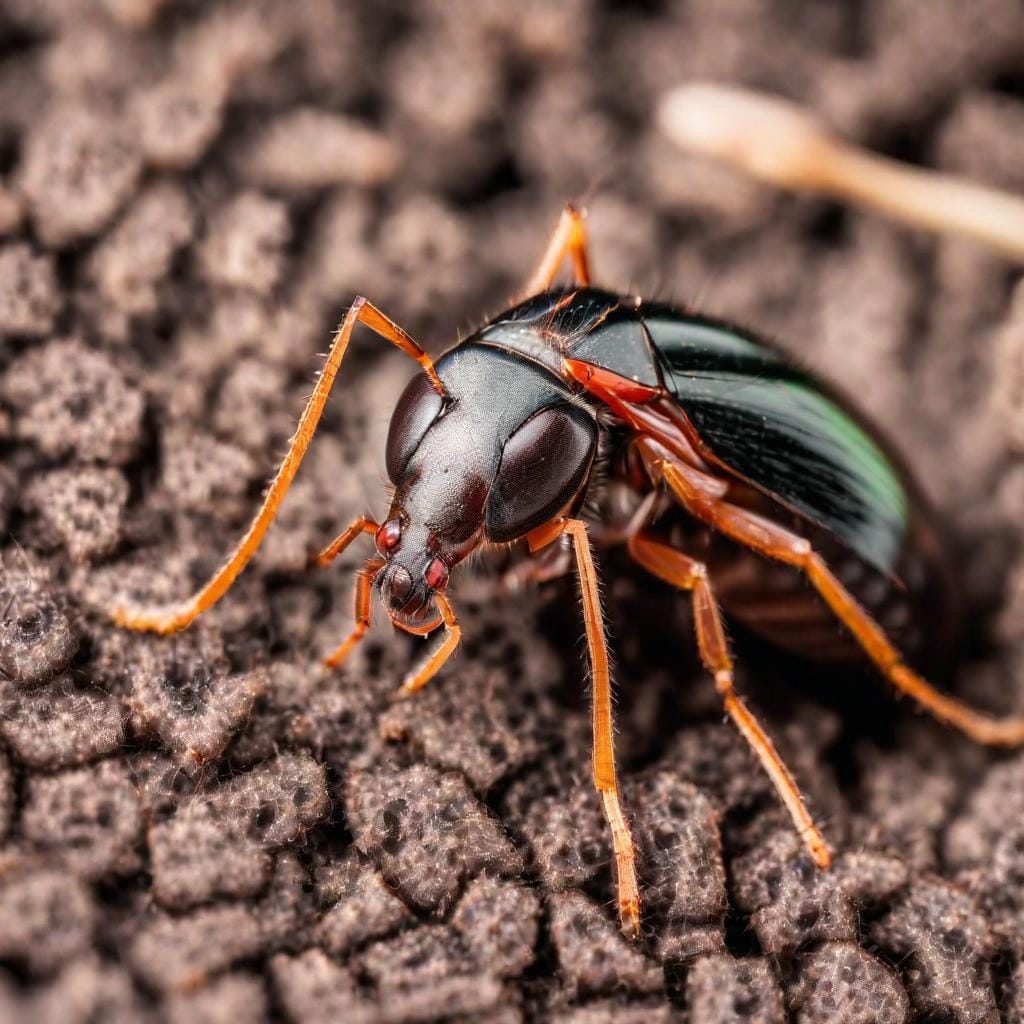
Best Practices for Commercial Pest Control
Commercial establishments, especially those in the food industry, must adhere to stringent pest control standards to ensure public safety and compliance with regulations. Effective pest management in these settings requires a comprehensive approach that integrates preventive measures, regular monitoring, and professional services. Conducting thorough inspections of the facility is essential, focusing on areas where pests are likely to thrive, such as kitchens, storage areas, and waste disposal zones. Employee training is crucial for maintaining high standards of cleanliness and for early detection and reporting of pest problems. Partnering with a professional pest control company ensures regular monitoring, effective treatment, and compliance with health regulations. Regular facility maintenance, including structural repairs and proper utility management, helps prevent pest entry and harborage. By implementing these best practices, commercial establishments can maintain a pest-free environment, protect public health, and uphold their reputation.
Comprehensive Inspections
Comprehensive inspections are a cornerstone of effective pest management in commercial settings. These inspections should be thorough and systematic, covering all areas where pests are likely to gain entry or establish themselves. Key areas to inspect include kitchens, storage rooms, waste disposal areas, and any other spaces where food and water are accessible. Inspections should look for signs of pest activity, such as droppings, gnaw marks, nesting materials, and damaged goods. In addition, structural vulnerabilities, such as cracks, gaps, and poorly sealed entry points, should be identified and addressed. Regular inspections allow for early detection of pest issues, enabling prompt intervention before infestations become severe. Detailed records of inspection findings and actions taken should be maintained to ensure compliance with health regulations and to track the effectiveness of pest control measures. By conducting comprehensive inspections regularly, commercial establishments can proactively manage pest risks and maintain a safe, hygienic environment.
Employee Training
Employee training is a critical component of pest control in commercial settings. Well-informed staff can significantly contribute to maintaining a pest-free environment by adhering to best practices and promptly reporting any signs of pest activity. Training programs should cover the importance of sanitation and hygiene, emphasizing regular cleaning schedules and proper waste management. Employees should be educated on identifying signs of pest infestations, such as droppings, gnaw marks, and unusual odors, and know the procedures for reporting these issues to management or pest control professionals. In food service establishments, training should include proper food storage techniques and measures to prevent cross-contamination. Regular training sessions and updates ensure that employees remain vigilant and informed about the latest pest control practices and regulations. By fostering a culture of awareness and responsibility, businesses can significantly reduce the risk of pest infestations and ensure compliance with health and safety standards.
Contract Professional Services
Partnering with a professional pest control company is essential for maintaining effective pest management in commercial settings. Professional services offer the expertise and resources needed to address complex pest issues that may be beyond the capabilities of in-house staff. These companies can provide tailored Integrated Pest Management (IPM) plans that combine various strategies to control and prevent infestations. Regular monitoring and inspections by professionals help to detect and address pest problems early, preventing them from escalating. Professional pest control companies also ensure that treatments are applied safely and in accordance with regulations, minimizing risks to employees, customers, and the environment. Detailed documentation and reporting provided by these services help businesses maintain compliance with health and safety standards. By contracting professional pest control services, commercial establishments can ensure a high level of pest management, protect their reputation, and provide a safe environment for their customers and staff.
Facility Maintenance
Regular facility maintenance is a fundamental aspect of pest control in commercial establishments. Proper maintenance practices help prevent pest entry and reduce the conditions that can lead to infestations. Structural repairs are essential to close off entry points for pests, such as sealing cracks and gaps in walls, floors, and foundations. Ensuring that doors and windows are fitted with proper seals and screens can also prevent pests from entering. Maintenance of utility systems is crucial; plumbing leaks should be repaired promptly to prevent moisture buildup, which can attract pests like rodents and insects. HVAC systems should be inspected and maintained to ensure proper ventilation and to prevent pest access through ducts. Regular cleaning and sanitation practices should be upheld to remove potential food and water sources for pests. By maintaining the facility diligently, commercial establishments can create an environment that is less conducive to pests, supporting overall pest management efforts and ensuring a safe, hygienic space for operations.
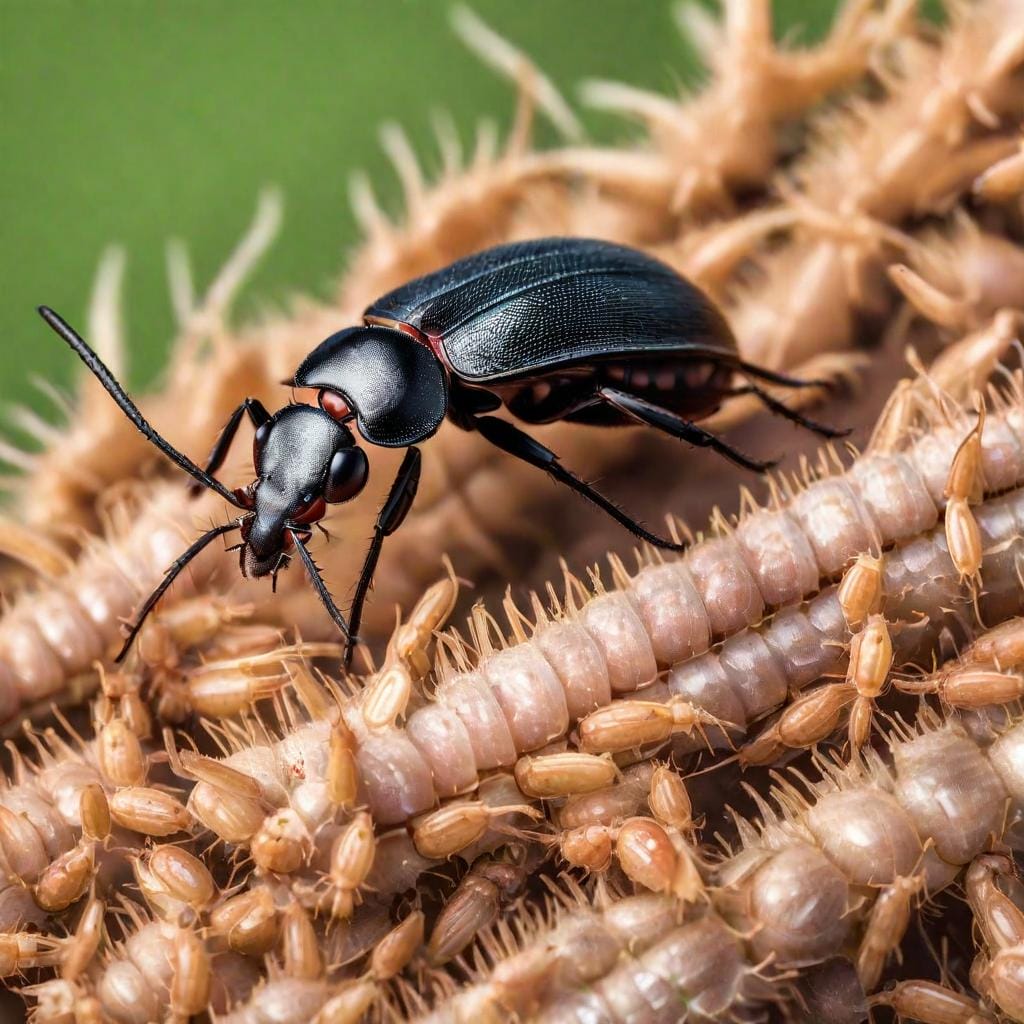
Agricultural Pest Control Strategies
Effective pest control in agriculture is vital for protecting crops and ensuring high yields. Farmers must employ a combination of preventive measures and targeted treatments to manage pest populations effectively. Regular crop monitoring is essential for early detection of pest activity and damage. Implementing crop rotation disrupts pest life cycles and reduces their populations by changing the environment from one season to the next. Biological control methods, such as introducing beneficial insects, nematodes, and microbial agents, offer sustainable alternatives to chemical pesticides. Planting pest-resistant crop varieties can also reduce susceptibility to pest damage, minimizing the need for chemical treatments. When chemical control is necessary, it should be used judiciously and in combination with other Integrated Pest Management (IPM) strategies to prevent resistance development. By integrating these practices, farmers can manage pest populations effectively, protect their crops, and promote sustainable agricultural practices.
Crop Monitoring
Regular crop monitoring is a critical practice in agricultural pest control. By systematically observing crops for signs of pest activity and damage, farmers can detect problems early and take appropriate action before infestations become severe. Monitoring involves inspecting plants for visible signs of pests, such as chewed leaves, discoloration, and the presence of insects or their eggs. It also includes using tools like pheromone traps and sticky traps to capture and identify pests. Data collected from these observations should be recorded and analyzed to identify trends and patterns in pest activity. Early detection through regular monitoring allows for timely interventions, which can include targeted applications of pesticides, the introduction of beneficial insects, or other control measures. This proactive approach helps to minimize crop damage, reduce yield losses, and limit the need for broad-spectrum chemical treatments, supporting more sustainable and effective pest management practices.
Crop Rotation
Crop rotation is a time-tested strategy in agricultural pest control that involves changing the types of crops grown in a particular field from one season to the next. This practice disrupts the life cycles of pests that are specific to certain crops, making it harder for them to establish and proliferate. For example, rotating between crops that are susceptible to different pests can prevent the buildup of pest populations that might occur if the same crop is planted repeatedly. Crop rotation also helps improve soil health and fertility, which can make plants more resilient to pest attacks. By diversifying the planting schedule, farmers can naturally reduce the reliance on chemical pesticides, as the varied crops create an environment that is less favorable for pests. Implementing crop rotation requires careful planning and knowledge of the crops and pests involved, but it can lead to healthier crops and more sustainable farming practices.
Biological Control
Biological control in agriculture involves using natural predators, parasites, and pathogens to manage pest populations. This method leverages the natural relationships between species to keep pest numbers in check, providing an environmentally friendly alternative to chemical pesticides. For example, introducing ladybugs and predatory mites can effectively control aphids and other harmful insects. Parasitic wasps can target and kill specific pests like caterpillars and beetles, while microbial agents such as beneficial bacteria, fungi, and viruses can infect and eliminate pests. These biological agents are particularly valuable in integrated pest management (IPM) programs, where they can reduce the need for chemical interventions and help maintain ecological balance. The use of biological control requires careful planning and monitoring to ensure that the introduced species do not become invasive or disrupt local ecosystems. When implemented correctly, biological control provides a sustainable, long-term solution to pest management, enhancing biodiversity and supporting more resilient agricultural systems.
Resistant Varieties
Planting pest-resistant crop varieties is an effective strategy in agricultural pest control. These varieties have been bred to withstand or deter specific pests, reducing the need for chemical treatments and minimizing crop damage. Resistant crops can possess traits such as tougher leaves, chemical compounds that deter feeding, or an ability to tolerate pest attacks without significant yield loss. For example, certain corn varieties have been developed to resist the corn borer, a common pest that can cause extensive damage. Using resistant varieties can be particularly beneficial in regions where certain pests are prevalent and difficult to control through other means. This approach not only helps in managing pest populations but also contributes to sustainable farming practices by reducing reliance on pesticides, which can lead to pest resistance and environmental harm. By incorporating resistant varieties into their crop planning, farmers can achieve higher yields and more resilient agricultural systems.
Chemical Control
When necessary, chemical control can be an effective component of agricultural pest management, but it should be used judiciously and as part of an Integrated Pest Management (IPM) strategy. The key to effective chemical control is selecting pesticides that are specifically targeted to the pests present, which minimizes the impact on non-target species and reduces environmental harm. Low-toxicity options are preferred to ensure the safety of farm workers, consumers, and beneficial organisms. Proper application techniques, including accurate
dosages and timing, are crucial to avoid pesticide resistance and ensure effectiveness. It is important to follow all label instructions and safety guidelines when using chemical treatments. Combining chemical control with other methods, such as cultural, biological, and mechanical practices, can enhance overall pest management and lead to more sustainable outcomes. By integrating chemical control into a broader IPM framework, farmers can manage pests effectively while promoting environmental stewardship and agricultural sustainability.
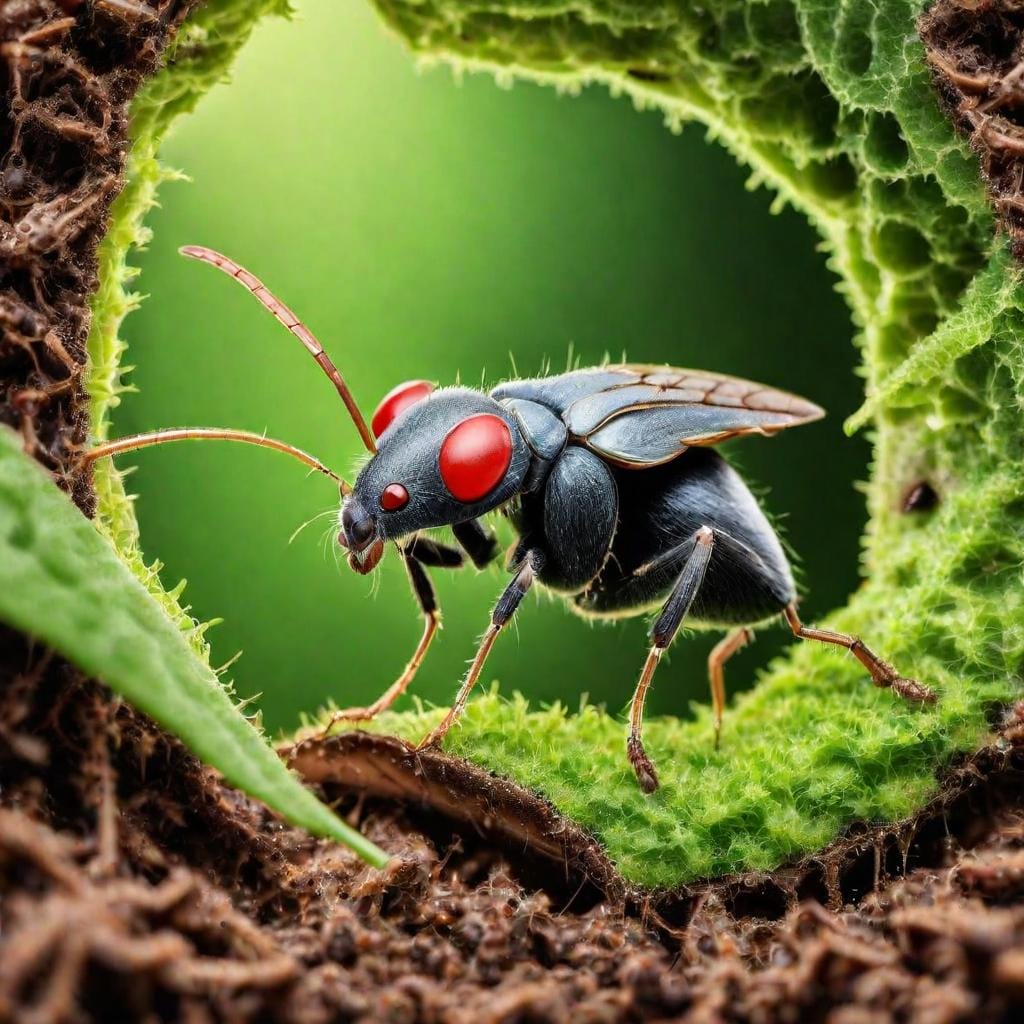
Environmental Impact of Pest Control
The environmental impact of pest control is a significant consideration in developing and implementing pest management strategies. Traditional chemical pesticides can have detrimental effects on non-target species, including beneficial insects, wildlife, and even humans. They can also contaminate soil and water, leading to broader ecological disruptions. Integrated Pest Management (IPM) seeks to minimize these impacts by combining various control methods that are less harmful to the environment. Biological control, for instance, uses natural predators and pathogens to manage pest populations without the adverse effects of chemicals. Cultural and mechanical controls, such as habitat modification and physical barriers, also reduce the need for chemical interventions. When chemical control is necessary, the use of targeted, low-toxicity pesticides applied in precise amounts can mitigate environmental harm. By prioritizing environmentally friendly practices and reducing reliance on harmful chemicals, pest control efforts can achieve effective results while protecting ecosystems and promoting long-term sustainability.
Conclusion
Effective pest control is a multifaceted challenge that requires a comprehensive approach combining various methods and strategies. Understanding pest behavior and implementing Integrated Pest Management (IPM) principles are crucial for sustainable and effective pest management. Whether in residential, commercial, or agricultural settings, adopting best practices such as regular inspections, proper food storage, waste management, and facility maintenance can significantly reduce the risk of pest infestations. Employing biological control methods and resistant crop varieties, along with judicious use of chemical treatments, can enhance pest control efforts while minimizing environmental impact. By integrating these practices, individuals and businesses can maintain healthier, safer environments and contribute to long-term ecological balance.
Frequently Asked Questions (FAQ)
1. What are the most effective methods for residential pest control?
The most effective methods for residential pest control include regular inspections, proper food storage, effective waste management, yard maintenance, and pest-proofing measures. These practices help prevent pest entry and eliminate potential attractants.
2. What is Integrated Pest Management (IPM) and how does it work?
Integrated Pest Management (IPM) is a sustainable approach that combines cultural, biological, mechanical, and chemical controls to manage pests. It emphasizes prevention and uses chemical treatments as a last resort, aiming to minimize environmental impact and promote long-term pest control.
3. How often should I inspect my home for pests?
It’s recommended to inspect your home for pests at least quarterly. However, in areas prone to pest problems, more frequent inspections, such as monthly, may be necessary to ensure early detection and intervention.
4. Are chemical pesticides safe to use around children and pets?
Chemical pesticides can pose risks to children and pets if not used correctly. It is crucial to select low-toxicity options, follow label instructions meticulously, and consider alternative methods like IPM to minimize exposure and ensure safety.
5. What are some natural pest control methods for my garden?
Natural pest control methods for gardens include introducing beneficial insects like ladybugs and predatory mites, using neem oil and insecticidal soaps, planting pest-resistant varieties, and practicing crop rotation to disrupt pest life cycles.
6. How can I prevent pests in my commercial establishment?
Preventing pests in a commercial establishment involves conducting comprehensive inspections, training employees on sanitation practices, contracting professional pest control services, and maintaining the facility to prevent pest entry and harborage.
7. What are the benefits of using biological control in agriculture?
Biological control offers several benefits in agriculture, including reducing reliance on chemical pesticides, minimizing environmental impact, promoting ecological balance, and enhancing long-term pest resistance. It involves using natural predators, parasites, and pathogens to manage pest populations.
8. How can crop rotation help in pest control?
Crop rotation helps in pest control by disrupting the life cycles of pests that are specific to certain crops. By changing the crop types grown in a particular field each season, pests are less likely to establish and proliferate, reducing the need for chemical treatments.
9. What are some common signs of pest infestations in homes?
Common signs of pest infestations in homes include droppings, gnaw marks, damaged food packaging, nests, strange odors, and sightings of live or dead pests. Regular inspections can help detect these signs early.
10. How do I choose the right professional pest control service?
When choosing a professional pest control service, look for companies with good reputations, proper licensing, and certifications. They should offer comprehensive IPM plans, provide detailed documentation, and have experience with the specific pest issues you are facing.

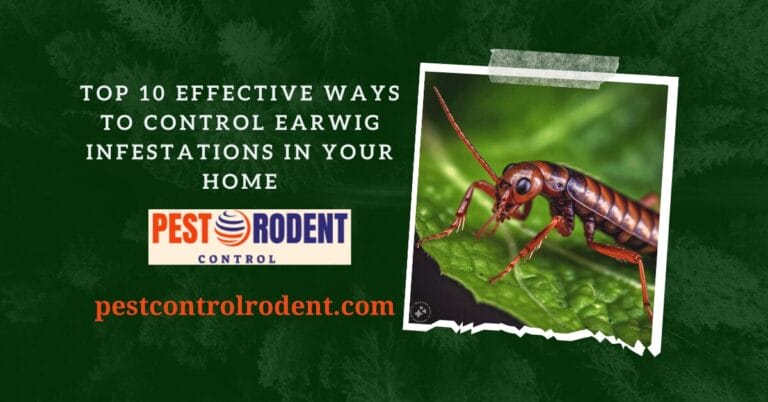
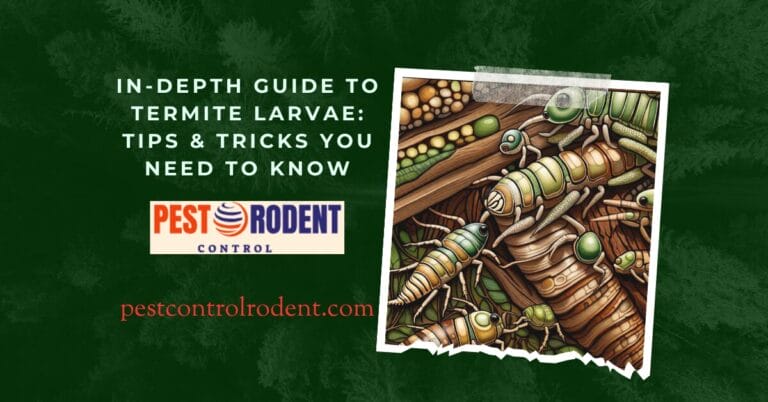

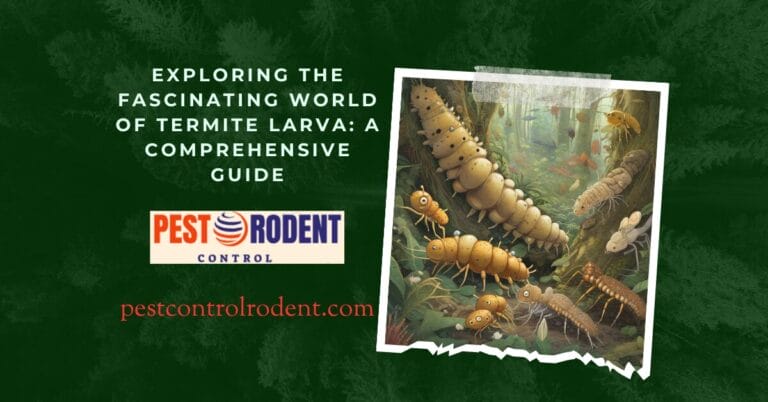
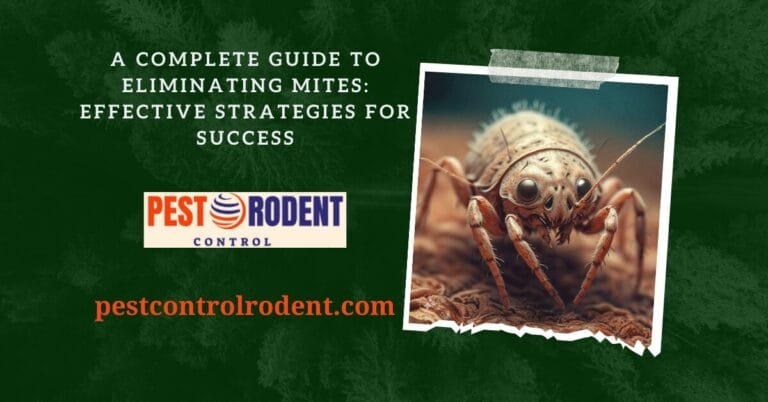
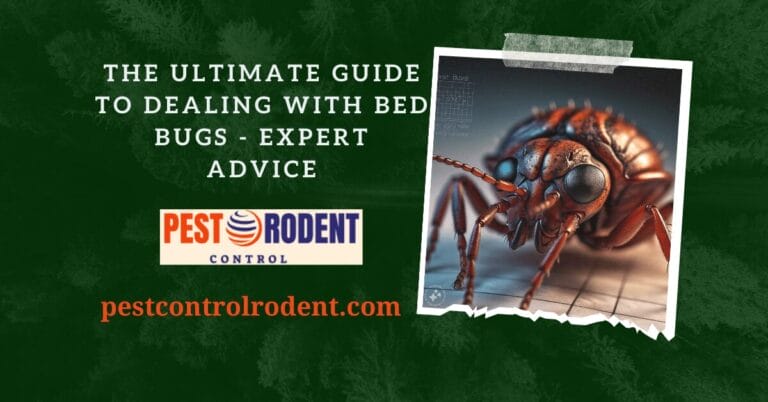
4 Comments